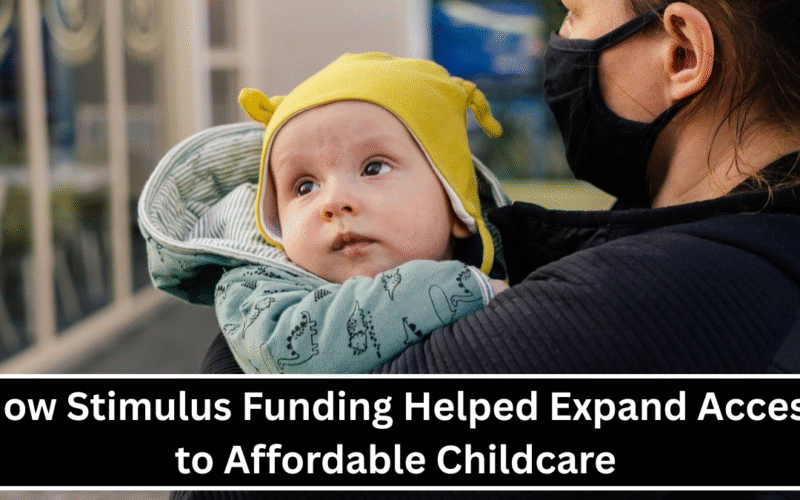Childcare has always been a crucial support system for working families. But during the COVID-19 pandemic, the childcare sector faced massive disruptions—centers closed, staff left, and many families struggled to afford or find care. To respond to this crisis, the U.S. government introduced several stimulus packages, including the American Rescue Plan, to provide emergency relief. One of the most impactful outcomes of this funding was the expansion of access to affordable and reliable childcare for millions of American families.
Thanks to this financial support, many childcare providers were able to stay open, improve services, and reach underserved communities. In this article, we’ll explore how stimulus funding played a key role in supporting children, parents, and childcare workers alike.
Stabilizing the Childcare Sector with Emergency Relief
One of the primary goals of stimulus funding was to prevent childcare providers from shutting down during the height of the pandemic. Over $39 billion was allocated to help stabilize the childcare industry. These funds allowed childcare centers to pay rent, cover operating costs, retain staff, and follow health and safety guidelines. This helped avoid a total collapse of the system. According to reports, over 200,000 childcare programs across the U.S. received aid from the Child Care Stabilization Fund. Without this support, thousands of centers would have been forced to close, leaving millions of parents without options and pushing many out of the workforce.
In addition to keeping existing programs afloat, funding also supported new childcare initiatives in communities with limited access. This ensured that low-income and rural families could access services that were once out of reach.
Making Childcare More Affordable for Working Families
Even before the pandemic, the cost of childcare in the U.S. was a major burden for many families—often rivaling college tuition. The stimulus funding helped to reduce this pressure by providing direct subsidies and financial support for low- and middle-income parents.
Federal funds were distributed to state agencies, which used them to increase childcare vouchers and expand eligibility for support programs. For example, some families who previously did not qualify for assistance were now able to access free or low-cost care.
These efforts had a two-fold effect:
- More children were able to attend early education programs, which are vital for brain development and school readiness.
- Parents, especially mothers, were able to return to the workforce with fewer worries about childcare costs or availability.
Moreover, many providers were able to raise wages for their staff using these funds, improving workforce retention and ensuring better care for children.
Stimulus funding played a vital role in not only saving the childcare industry from collapse but also in laying the foundation for a more equitable and accessible future. By stabilizing providers, expanding services, and easing financial stress on families, the funding helped turn a crisis into an opportunity for long-term improvement.
While much work still needs to be done to create a truly affordable and universal childcare system in the U.S., the pandemic response showed what is possible when public investment aligns with community needs. Policymakers and advocates continue to push for permanent reforms that build on the progress made during this critical period.
FAQ’s:
1. What was the main source of childcare stimulus funding?
The main source was the American Rescue Plan Act of 2021, which included over $39 billion specifically for childcare through the Child Care Stabilization Fund and other support programs.
2. How did the stimulus funding help childcare centers?
It provided financial support for rent, utilities, salaries, PPE, health safety improvements, and other operational needs to keep centers open and safe.
3. Who benefited from the stimulus-funded childcare programs?
Millions of working families, especially low- and middle-income households, benefited through expanded access to affordable care and improved services.
4. Were any new childcare programs created with the funding?
Yes, the funding allowed some states to create or expand childcare offerings in underserved communities, especially in rural and low-income areas.
5. Is the stimulus childcare funding still available in 2025?
Most emergency funding was temporary and has expired, but some states are still using remaining funds or implementing long-term policy changes inspired by the results of the stimulus support.
